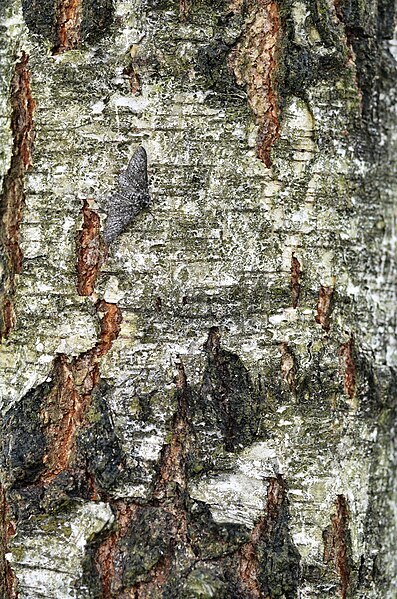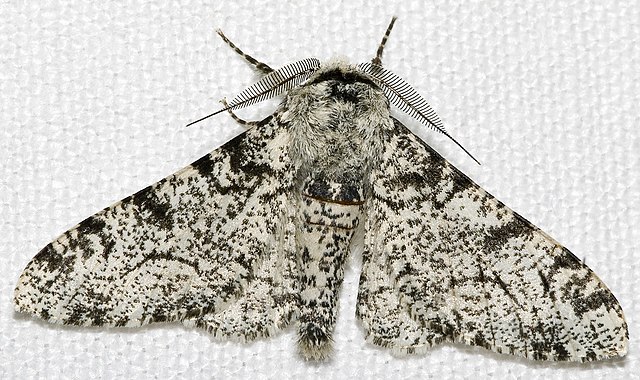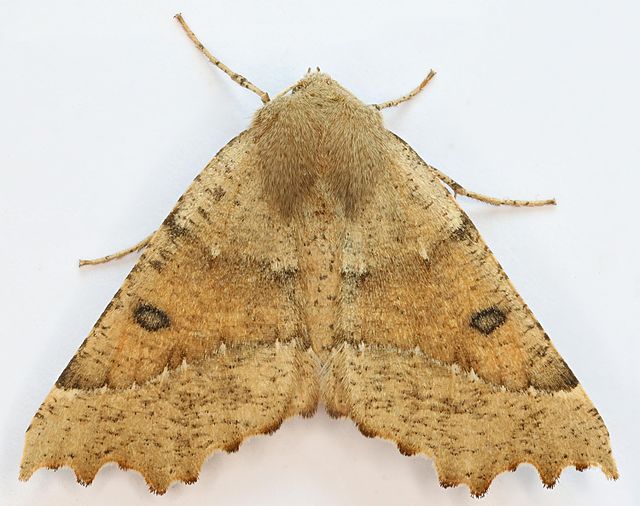Henry Bernard Davis Kettlewell was a British geneticist, lepidopterist and medical doctor, who performed research on the influence of industrial melanism on peppered moth coloration, showing why moths are darker in polluted areas. This experiment is cited as a classic demonstration of natural selection in action. After live video record of the experiment with Niko Tinbergen, Sewall Wright called the study as "the clearest case in which a conspicuous evolutionary process has actually been observed."
Bernard Kettlewell
Image: Biston.betularia.7200
Image: Biston.betularia.f.carbonaria.7209
Industrial melanism is an evolutionary effect prominent in several arthropods, where dark pigmentation (melanism) has evolved in an environment affected by industrial pollution, including sulphur dioxide gas and dark soot deposits. Sulphur dioxide kills lichens, leaving tree bark bare where in clean areas it is boldly patterned, while soot darkens bark and other surfaces. Darker pigmented individuals have a higher fitness in those areas as their camouflage matches the polluted background better; they are thus favoured by natural selection. This change, extensively studied by Bernard Kettlewell (1907–1979), is a popular teaching example in Darwinian evolution, providing evidence for natural selection. Kettlewell's results have been challenged by zoologists, creationists and the journalist Judith Hooper, but later researchers have upheld Kettlewell's findings.

Intermediate insularia form (between pale typica and dark carbonaria in tone) of peppered moth on a lichen-covered birch tree: Bernard Kettlewell counted the frequencies of all three forms.
Tree bark covered in shrubby and leafy lichens forms a patterned background against which non-melanic disruptively patterned moth camouflage is effective.
Image: Odontopera bidentata, Scalloped Hazel, Trawscoed, North Wales, June 2016 Flickr janetgraham 84
Image: Odontopera bidentata (7275071212)







